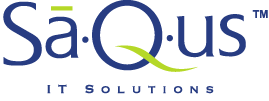Deploying a Microsoft Access Application over Terminal Services
What is terminal services (TS)?
(from wikipedia) Terminal Services is a component of Microsoft Windows operating systems (both client and server versions) that allows a user to access applications or data stored on a remote computer over a network connection. Terminal Services is Microsoft's take on server centric computing.
What are advantages to deploying an Access application over terminal services?
- Increase in application performance and speed.
- Centralizing the application makes upgrades, troubleshooting, and management easier.
- The application can be expanded past a LAN environment and becomes accessible by remote users via a WAN or Internet connection.
What are disadvantages?
- Printing can be a challenge, not all printers support Terminal Services.
- Licensing – of course there are costs involved when deciding to use a TS solution.
- There is always the learning curve for developers who are unfamiliar with TS.
How do I deploy an Access application via terminal services?
- The application should be deployed and accessible on a SINGLE TS Server.
- The database should be split into a FE/BE application.
- The FE/BE files should be located on the local drive of the TS Server.
The application should be deployed and accessible on a single TS Server. Using more than one TS server to access the same MS Access application defeats the purpose of having the application on a TS server. It is completely pointless an will only result in more work and headaches for those using and administrating the application. An organization may have several TS servers available, the MS Access application should reside on only one of them.
The database should be split into a FE/BE application. This is a must; it seperates the data from the application. It will help prevent data lost in the event of a corruption.
The FE/BE files should be located on the local drive of the TS Server. This is a very important step that is often overlooked. I have seen many times where an Access application was deployed using Terminal Services, but the application files were on another server. This makes no sense. One of the major benefits, increased performance and speed, are nullified if the TS Server has to go out to the network to retrieve the application and data files. One should be able to determine if the files are local by the way the table need to be linked. One should be able to link by a local drive letter, such as C:, D:, or E: via the TS server. If the files need to be linked by a mapped drive or UNC name, then the files are not local.
Should my Access/TS application have one FE application or should I deploy a FE to each user’s remote session?
I am an advocate of each user having their own copy of the Front-end application in a typical LAN environment. However, in the TS environment it is not necessary. That is one of the benefits of deploying a TS application. A properly developed access application should have the ability to be deployed as a single FE file that all users can share. If the developer prefers, the can still deploy a copy of the FE within each user’s session.
How can remote users print?
Printing can be quite tricky when using Terminal Services. Generally users who print to network printers have little difficulty. It is the users who want to print to their personal desktop printer that typically have issues. In order to print, the print drivers for the printer must be installed on the TS Server...and not all printer support Terminal Services. Stick with the personal HP LaserJet printers for user’s who need their own desktop printers (if possible). This will make supporting printer much easier.
Where can I find resources on Terminal Services?
MSTerminalServices.org
Terminal Server and Citrix troubleshooting
Remote Desktop Connection software
|

